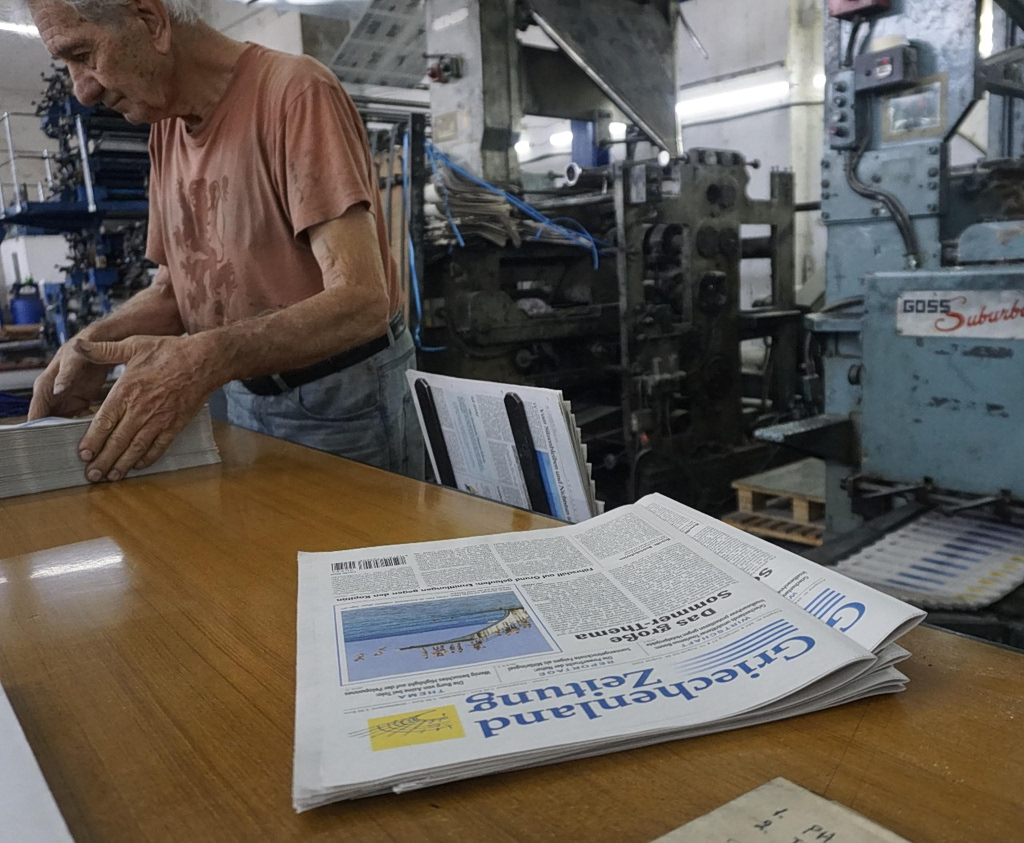PARIS—The limestone facade of Notre Dame Cathedral is radiant. Its ornate gargoyles and angels show no signs of the smoke and flames that once billowed from the church. The cavernous interior is immaculate, the soot having been meticulously scrubbed from its arches.
By almost any metric the restoration of Notre Dame has been a success, coming five years after a fire swept across the masterpiece of Gothic architecture, nearly destroying it. On Saturday, a host of global figures, including President-elect Donald Trump , gathered inside the cathedral for a solemn ceremony to mark its reopening.
Notre Dame’s revival is nothing short of a miracle to many, a sign that cooperation across France and beyond to achieve a singular goal is still possible. Yet the gleaming cathedral also stands in contrast to the dark times that have enveloped Paris and the world. Wars are raging in Ukraine and the Middle East , and the U.S.-led international order that has prevailed since the end of World War II is at a turning point.
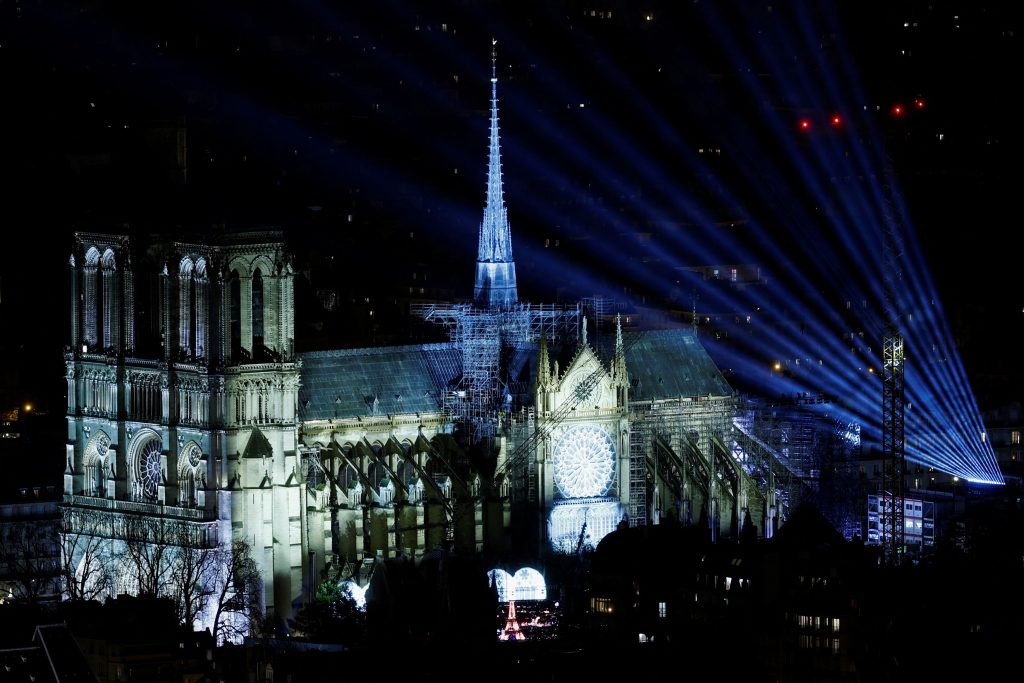
General view of the Notre-Dame de Paris Cathedral, five-and-a-half years after a fire ravaged the Gothic masterpiece, during a light show for its reopening service ceremony as part of ceremonies to mark the Cathedral’s reopening after its restoration, in Paris, France, December 7, 2024. REUTERS/Christian Hartmann
“Tonight the bells of Notre Dame ring anew,” French President Emmanuel Macron said in an address before the packed pews. “This cathedral is a happy metaphor for what a nation is, and what the world should be.”
For Trump, the ceremony marked a return to the world stage. He held talks earlier with Macron and Ukrainian President Volodymyr Zelensky for the first time since he won a second term. Trump has fueled the anxieties of leaders across Europe by questioning Washington’s commitment to underpinning Europe’s security architecture without greater contributions from allies. He also wants to impose tariffs that would punish the continent’s economy.
Heading into the talks, Trump said that “it certainly seemed like the world is going a little crazy right now. And we’ll be talking about that.
Zelensky wrote on X, “President Trump is, as always, resolute.” He added, “We all want this war to end as soon as possible and in a just way.”
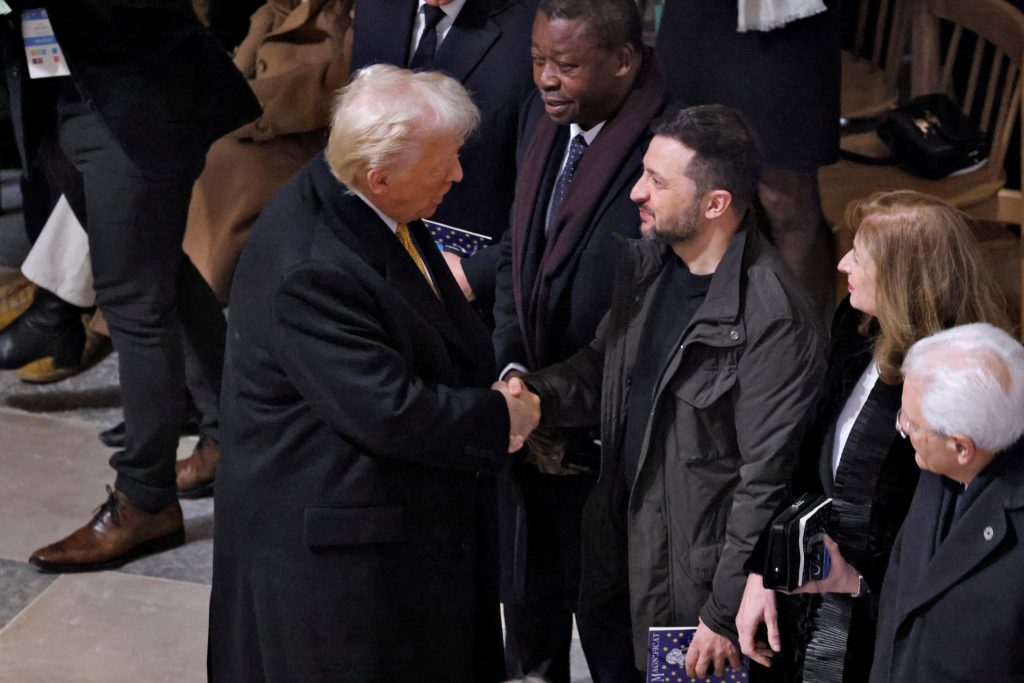
U.S. President-elect Donald Trump and Ukrainian President Volodymyr Zelenskiy shake hands inside the Notre-Dame de Paris Cathedral ahead of a ceremony to mark its re-opening following the 2019 fire, in Paris, France, December 7, 2024. LUDOVIC MARIN/Pool via REUTERS
The leaders later joined a host of dignitaries and business executives, including Elon Musk , inside Notre Dame. Firefighters and restoration workers involved in saving the cathedral received a standing ovation upon entering the church’s vaulted arches, as did Zelensky.
The ceremony started as the archbishop of Paris, Laurent Ulrich, pounded the cathedral’s doors with his crosier. The cathedral’s organ—perched under one of its stained-glass rose windows—unleashed a series of chords that reverberated across the pews, where first lady Jill Biden sat with Prince William and others.
The inauguration comes at a painful moment for France. Its economy has nearly stalled. Its public finances are in disarray. And this past week the government collapsed in a parliamentary no-confidence vote for the first time since 1962.
The breakdown has cast a shadow over an event intended to mark the return to glory of not only Notre Dame but also the country as a whole. Macron—the driving force behind the Cathedral’s swift recovery—has conceived of the inaugural ceremony as an elaborate victory lap, capping a year that included the hosting of the Summer Olympics in Paris.
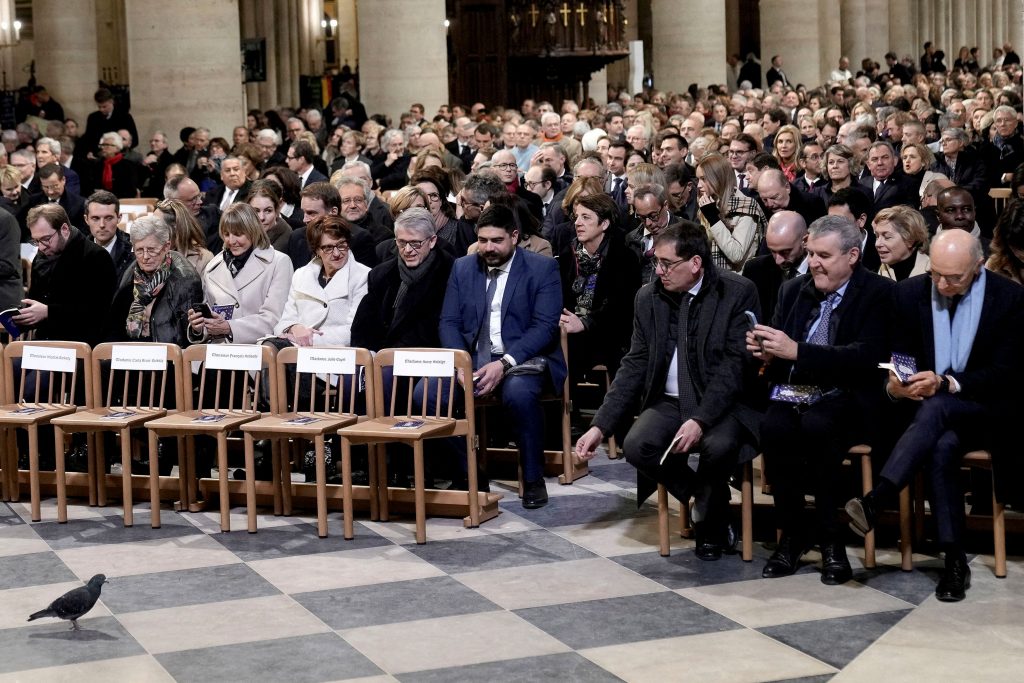
A pigeon is pictured inside Notre Dame Cathedral during a ceremony to mark the re-opening of the landmark cathedral following the 2019 fire, in Paris, France, December 7, 2024. Thibault Camus/Pool via REUTERS TPX IMAGES OF THE DAY
For Macron, rebuilding Notre Dame on time and on target was about affirming his vision of France as a nation capable of shedding its historical burdens and perennial sense of fatalism. Macron’s France is a startup nation of can-do strivers and the home of some of the world’s richest billionaires, including luxury titans who funneled hundreds of millions of euros into repairing the church. It is where some of the world’s most accomplished artisans, carpenters and stonemasons still operate, allowing them to mobilize for a project of biblical proportions.
“We have rediscovered what great nations can do: achieve the impossible,” Macron said.
Macron’s many opponents—from protesters on the streets to lawmakers in the National Assembly—see the return of Notre Dame differently. For them, the cathedral’s restoration belies deeper signs of decay across French society, particularly the widening gap between the wealthy and poor. Many French see Notre Dame rising from the ashes when public services from hospitals to schools are in decline.
Eric Cormont, a 60-year-old who works in construction, was shopping in an outdoor market in a working-class suburb of Paris on Saturday. Cormont said he was amazed by how quickly craftsmen were able to rebuild the cathedral, but he is not interested in the celebrations organized by Macron.
“That’s the only thing he talks about, when the country’s a mess,” Cormont said.
Notre Dame has long been held up as a mirror of the soul of France. In his 19th-century novel “The Hunchback of Notre Dame,” Victor Hugo wrote that the cathedral, with its gargoyle drains and flying buttresses, embodied freedom of expression in Medieval France as “thoughts written in stone.”
In the years leading up to the fire, Notre Dame had fallen into disrepair as a result of decades of neglect .
As a tourist site, Notre Dame was as popular as ever. But, in many ways, the state of the cathedral had become a symbol of the broader decline in church attendance, stemming from the rise of secularism across France and much of Western Europe.
Pope Francis, who didn’t attend the ceremony, sent a message that was read aloud. “May the rebirth of this admirable church constitute a prophetic sign of the renewal of the Church in France,” the pontiff said.
Located on the Île de la Cité, a small island in the middle of the Seine River, Notre Dame has for centuries been a center of civic and religious life.
In the immediate aftermath of the fire, the most urgent task was to stabilize the church. The fallen spire and roof had been central to the cathedral’s structural integrity, counteracting the force of its heavy walls and buttresses, which were at risk of collapsing. Water used to douse the flames created fissures in the massive stones that arc above Notre Dame’s nave, and seeped into the joints and mortar, leading to crumbling.
The scaffolding where the fire started threatened to collapse and take the cathedral down with it. The 350-ton metal structure, which had been built for previous restoration work, stood charred, twisted and shaky, where the spire used to be.
Thousands of people gathered on the riverbanks on April 15, 2019, to watch in horror as the stone cathedral became a cauldron of fire. It is still unknown what caused the fire that ravaged the church’s centuries-old timber roofing.
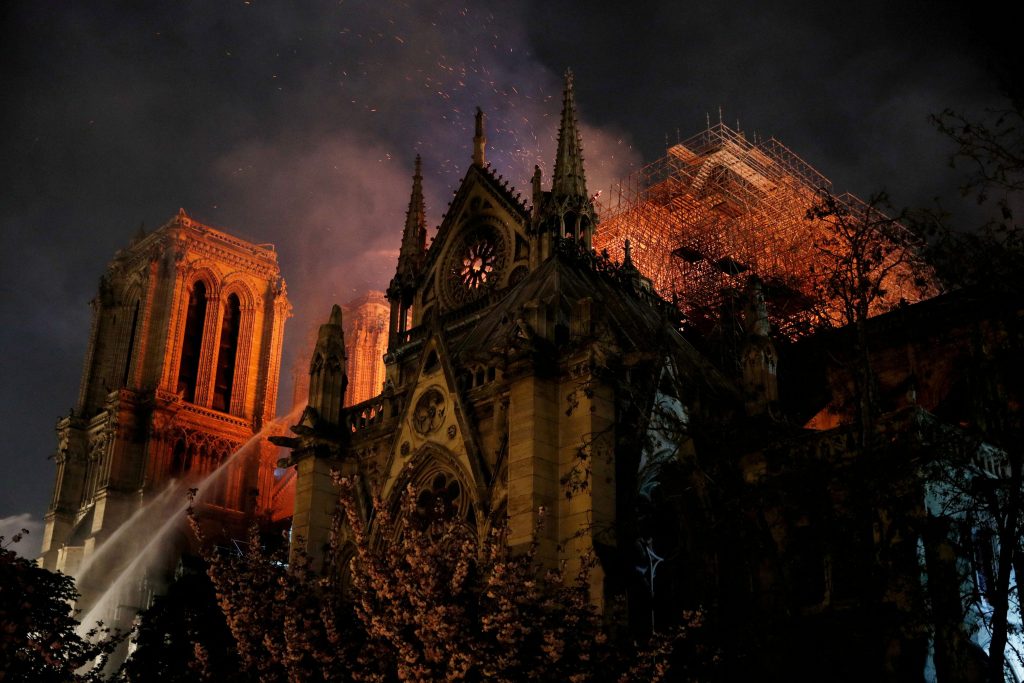
FILE PHOTO: Sparks fill the air as Paris Fire brigade members spray water to extinguish flames as the Notre Dame Cathedral burns in Paris, France, April 15, 2019. REUTERS/Philippe Wojazer/File Photo
Giant wooden supports were installed to reinforce the north, west and south gables as well as the flying buttresses. A new scaffolding was built around the old one, to allow workers, known as squirrels, to rappel down and remove it piece by piece.
The removal of the scaffolding finally allowed for the restoration work to start as endless debates raged over how to do it.
Macron wanted an international architectural competition to come up with a new design for the spire. The plan sparked outrage among historians who said the cathedral should be rebuilt identically to its form before the fire. Ultimately, Macron’s plan was shot down by the country’s National Heritage and Architecture Commission.
Macron didn’t give up on his idea to add a modern-day touch to Notre Dame. He organized this year another competition to select an artist to create new modern stained-glass windows to replace those designed by the 19th-century architect Eugène Viollet-le-Duc.
The government has yet to announce the name of the winner but the plan has already been met with fierce opposition.
Julien Lacaze, the head of an association that defends France’s heritage, launched a petition—which has gathered more than 240,000 signatures—against the new stained- glass windows
“What do these stained-glass windows celebrate? There’s nothing to celebrate,” he said.
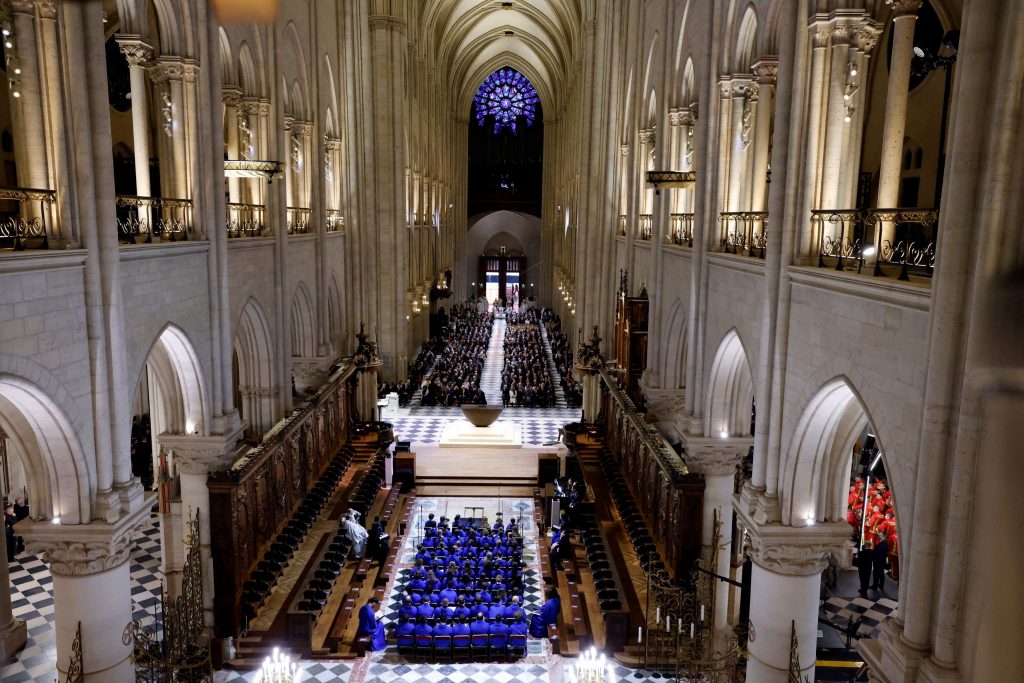
Attendees stand inside the Notre-Dame de Paris Cathedral during a ceremony to mark its re-opening following the 2019 fire, in Paris, France, December 7, 2024. LUDOVIC MARIN/Pool via REUTERS
The fire, Lacaze said, could have been avoided had authorities invested earlier in a modern fire-protection system. The restored cathedral has a remedy for that problem: Authorities have installed thermal cameras along with a system to douse any flames.
On Saturday, Macron recalled how the world seemed to stop the evening the cathedral burned. People from Rome to Moscow to Times Square in New York were riveted by images of the church’s giant spire becoming engulfed in flames before it suddenly came crashing down. Macron himself visited the charred church that night, moments after firefighters had managed to douse the flames.
“The spire was no more,” Macron said, noting how it fell into the cathedral’s transept, barely missing a statue of the Virgin Mary. “Notre Dame of Paris was saved. Disfigured, but saved by the bravery, the courage of these men.”
Write to Noemie Bisserbe at noemie.bisserbe@wsj.com and Stacy Meichtry at Stacy.Meichtry@wsj.com
